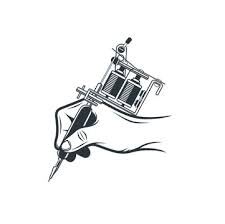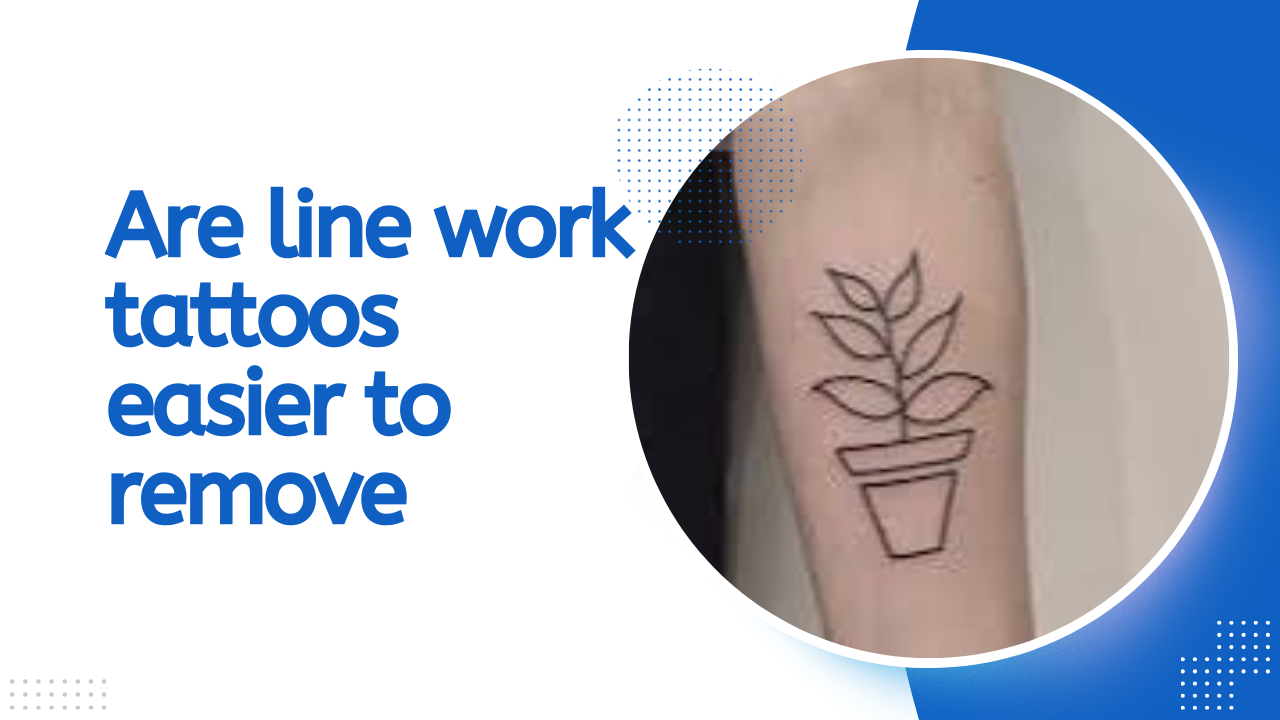Line work tattoos, characterized by their minimalist and intricate designs, have gained immense popularity in recent years.
Many people opt for these tattoos due to their simplicity and the aesthetic appeal of clean, defined lines.
However, as with any tattoo, some individuals may eventually seek removal for various reasons, such as a change in personal taste, professional requirements, or life circumstances.
Understanding the intricacies involved in tattoo removal, particularly for line work tattoos, is essential for those considering this option.
Tattoo removal is a complex process influenced by multiple factors, including the ink’s color, depth, and the individual’s skin type.
This article delves into whether line work tattoos are easier to remove compared to other styles, examining the key aspects that affect the removal process.
By exploring the characteristics of line work tattoos and the tattoo removal methods available, we aim to provide a comprehensive overview to help individuals make informed decisions about their tattoo removal journey.
What Are Line Work Tattoos?
Line work tattoos, also known as line art tattoos, are composed primarily of lines, often creating images, patterns, or abstract designs.
read also: 27+ Beautiful Turtle Tattoo Ideas That Totally Rocks
Unlike traditional tattoos that may incorporate shading and color, line work tattoos rely on the precision and clarity of lines to convey the desired artwork.
These tattoos can range from simple, single-line drawings to complex geometric patterns, making them versatile and appealing to a wide audience.
The popularity of line work tattoos can be attributed to their clean and elegant appearance.
They often require a high level of skill from the tattoo artist to ensure that lines are smooth, consistent, and well-placed.
Because they lack the dense ink coverage found in more traditional tattoos, line work tattoos can be perceived as less intimidating and more subtle, making them an attractive choice for tattoo enthusiasts and first-timers alike.
Factors Influencing Tattoo Removal
Several factors influence the ease or difficulty of tattoo removal. These include:
Ink Color and Composition
The color and composition of the tattoo ink play a significant role in the removal process.
Darker inks, such as black and dark blue, absorb laser light more effectively and are generally easier to remove.
In contrast, lighter inks, like yellow and green, can be more challenging due to their resistance to laser absorption.
Depth of Ink
The depth at which the ink is embedded in the skin also affects removal.
Tattoos with ink placed closer to the surface are usually easier to remove than those with ink embedded deeper into the dermis.
Line work tattoos, given their typically finer lines, often have ink deposited at a shallower depth, potentially facilitating easier removal.
Skin Type and Tone
Skin type and tone are crucial considerations in tattoo removal.
Individuals with lighter skin tones tend to experience more effective results with laser removal, as the contrast between the ink and skin allows for better laser targeting.
However, advancements in laser technology have made it possible to treat a wider range of skin tones with varying degrees of success.
Age of the Tattoo
Older tattoos are generally easier to remove than newer ones.
Over time, the body naturally breaks down tattoo ink particles, causing the tattoo to fade. This natural fading can make the removal process quicker and more efficient.
Tattoo Placement
The location of the tattoo on the body can impact removal efficacy.
Areas with better blood circulation, such as the chest and arms, tend to respond more favorably to laser treatments.
Conversely, tattoos on extremities like the hands and feet may require more sessions due to reduced blood flow.
Are Line Work Tattoos Easier to Remove?
Given the factors outlined above, line work tattoos often present certain advantages when it comes to removal. Here’s why:
Less Dense Ink Coverage
Line work tattoos typically have less dense ink coverage compared to traditional tattoos, which means there is less ink for the laser to break down.
The finer lines and minimalistic designs require fewer laser pulses, potentially making the removal process shorter and less painful.
Shallower Ink Depth
As previously mentioned, the ink in line work tattoos is often placed closer to the skin’s surface.
This shallower depth can enhance the effectiveness of laser treatments, as the laser can more easily reach and break down the ink particles.
Predominantly Dark Ink
Many line work tattoos are done in black or dark ink, which is more responsive to laser treatments.
Dark ink absorbs laser light more efficiently, leading to quicker and more noticeable fading with fewer treatment sessions.
However, it is essential to note that while line work tattoos may be easier to remove in some respects, the removal process is still influenced by individual factors such as skin type, the tattoo’s age, and the specific laser technology used.
Tattoo Removal Methods
There are several methods available for tattoo removal, each with its own set of advantages and limitations. The most common methods include:
Laser Removal
Laser removal is the most widely used and effective method for tattoo removal. It works by emitting intense light beams that target and break down the ink particles in the skin.
The body then gradually absorbs and eliminates these particles through the lymphatic system.
Multiple sessions are typically required, depending on the tattoo’s size, color, and depth.
Surgical Excision
Surgical excision involves physically cutting out the tattooed skin and stitching the remaining skin together.
This method is generally reserved for small tattoos due to the risk of scarring. While excision guarantees complete removal, it is invasive and requires a longer recovery time.
Dermabrasion
Dermabrasion involves sanding down the skin’s top layers to remove the tattoo ink. This method can be painful and may result in scarring, making it a less popular choice.
It is often used for smaller tattoos or in conjunction with other removal methods.
Chemical Peels
Chemical peels use acid solutions to remove the top layers of skin, gradually fading the tattoo.
This method is less effective than laser removal and carries a higher risk of skin irritation and scarring. It is generally considered a supplementary treatment rather than a primary option.
Pros and Cons of Line Work Tattoo Removal
Pros
- Quicker Removal: Due to the finer lines and less dense ink, line work tattoos often require fewer laser sessions, leading to a quicker overall removal process.
- Reduced Pain: The minimalistic nature of line work tattoos means less ink to break down, potentially resulting in less pain during laser treatments.
- Lower Risk of Scarring: With less ink to remove, there is a lower risk of scarring compared to more densely inked tattoos.
Cons
- Precision Required: The intricate designs of line work tattoos can require precise laser targeting, demanding skilled practitioners to avoid incomplete removal or skin damage.
- Multiple Factors at Play: Despite the advantages, individual factors such as skin type and tattoo age still significantly influence the removal process, meaning results can vary widely.
Aftercare and Recovery
Proper aftercare is crucial for a successful tattoo removal process, minimizing complications, and ensuring optimal results. Key aftercare steps include:
Immediate Post-Treatment Care
- Cool Compresses: Apply cool compresses to the treated area to reduce swelling and discomfort.
- Avoid Sun Exposure: Keep the treated area out of direct sunlight to prevent irritation and hyperpigmentation.
- Moisturize: Use a gentle, fragrance-free moisturizer to keep the skin hydrated and promote healing.
Long-Term Care
- Follow-Up Appointments: Attend all scheduled follow-up appointments to monitor progress and adjust treatment plans as needed.
- Healthy Lifestyle: Maintain a healthy lifestyle, including staying hydrated and eating a balanced diet, to support the body’s natural healing processes.
- Patience: Understand that tattoo removal is a gradual process and results may take time to become fully apparent.
Conclusion
Line work tattoos, with their minimalistic and elegant designs, may indeed be easier to remove compared to more traditional, densely inked tattoos.
The factors contributing to this include less dense ink coverage, shallower ink depth, and the predominance of dark ink, all of which can enhance the effectiveness of laser removal treatments.
However, individual factors such as skin type, tattoo age, and the expertise of the removal practitioner play crucial roles in determining the overall success of the removal process.
For those considering the removal of a line work tattoo, it is essential to consult with a professional to understand the specific requirements and expectations for your unique situation.
By being well-informed and following proper aftercare guidelines, individuals can achieve satisfactory results and embrace a new chapter free from unwanted ink.

I’m Tommy Hanks, a professional tattoo artist with over a decade of experience under my belt.
I’ve always had a passion for art, and tattooing has become my favorite medium for expressing creativity.
I own and operate a successful tattoo studio, where I get to create intricate designs and connect with a diverse range of clients.
In addition to my work in the studio, I run a blog called taggrs.com.
Through my blog, I share my experiences, insights into the latest tattoo trends, and tips for both aspiring tattoo artists and enthusiasts.
Tattooing is more than just a job for me; it’s a lifelong journey, and I love being able to share that journey with others.

